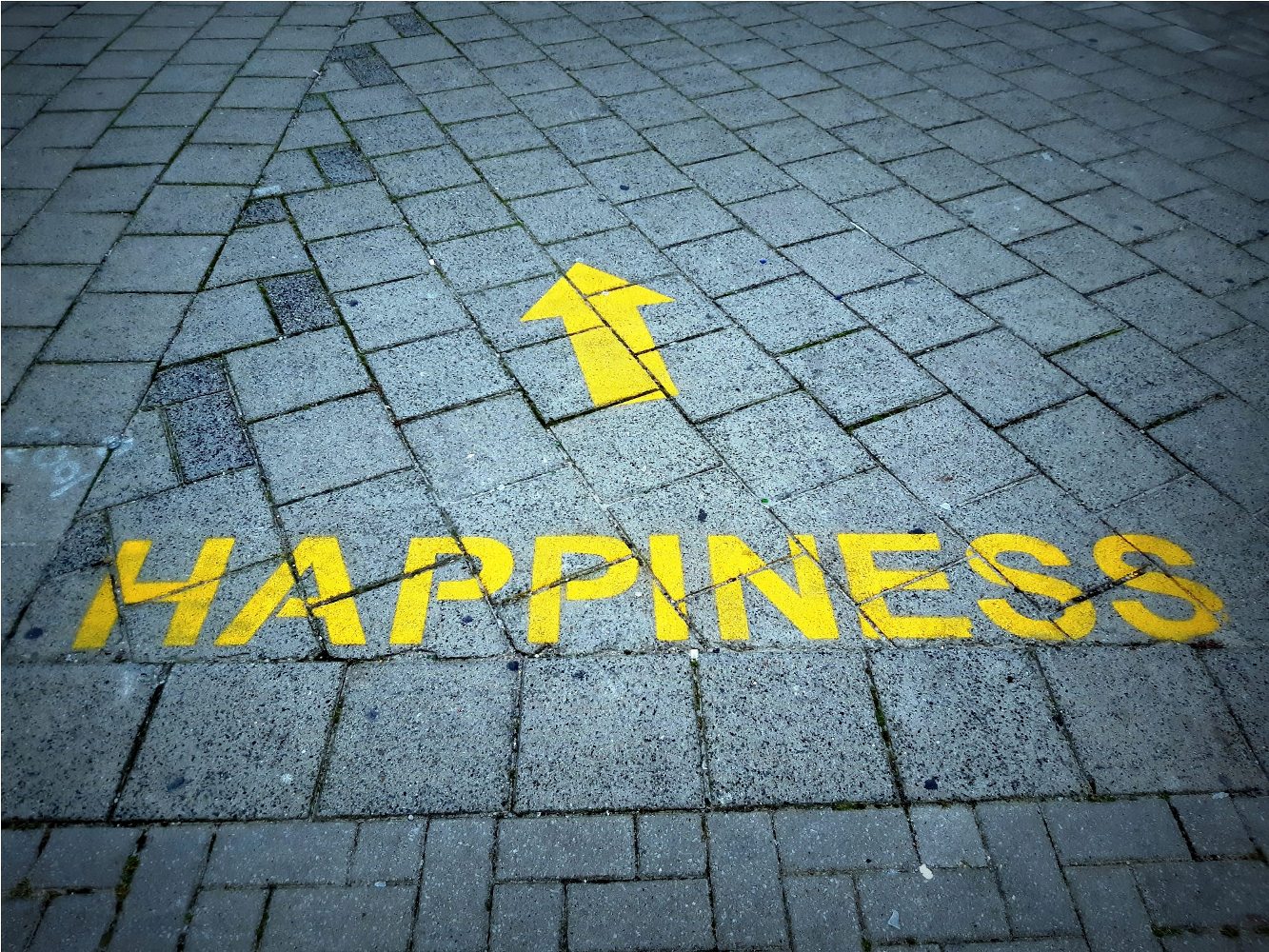What does it feel like to experience burnout? One picture people often use is that of a hamster on a wheel. Burnout comes with a sense of panic or anxiety, feeling overwhelmed by the demands of life. These feelings often begin to interfere with daily functioning. Irvine Christian Counseling can help individuals navigate and recover from burnout, offering support to regain balance and well-being.
Let’s consider a counseling client we’ll call Julia. She is a healthcare provider who was facing a crisis in her life. She sought counseling for burnout and anxiety.
 Julia’s emergency room schedule had her clocking in over 70 hours each week. She was so overwhelmed that she had driven to a cliff and thought about driving off the edge.
Julia’s emergency room schedule had her clocking in over 70 hours each week. She was so overwhelmed that she had driven to a cliff and thought about driving off the edge.
She was experiencing a deep sense of emptiness and fatigue. As a mother, she felt guilty for missing out on time with her kids. She also felt that she wasn’t able to give her best to her job. And as a healthcare provider, she worked with people in trauma, which greatly affected her. She was physically and emotionally depleted.
When these feelings began to overtake her, she blamed herself. Why couldn’t she make it all work? There was no way for her to take a break because no one could replace her. Her kids resented her and there was distance in her marriage, and she felt responsible for all of it.
According to a 2017 Gallup statistic, people in the United States have longer hours and less time off than in almost any other country around the world. We are a “never stop, always on” culture.
Steps to Overcoming Burnout Anxiety
Here are the first steps to consider when facing burnout anxiety:
- Acknowledge your circumstances realistically. Work-life balance is a healthy desire and need, and if you don’t have that, it’s no wonder you’re feeling overwhelmed.
- Acknowledge that to heal and spend more time with your loved ones, you’re going to have to set new boundaries.
- Realize that you’re not alone in experiencing burnout. It’s actually quite common, especially among healthcare providers. One of the best ways to reduce your anxiety is to have a support system.
- Realize that God knows you and your situation and that He also knows your future as He cares for you today.
Overwhelmed by Busyness
Busyness has become sort of a badge of honor and blanket excuse in our culture today. There’s an unspoken belief that the busier you are, the more important you are.
We sleep less than six hours a night on average, drink lots of caffeine, and feel like we don’t have time to do what we really enjoy. The simple things like chatting with a loved one, slowly enjoying a cup of tea, or even just daydreaming can get lost when we’re running from one thing to the next or distracted by our screens.
That’s why acknowledging burnout is so important. We have to identify our need to slow down. As humans, we are not created to rush around all the time or constantly be distracted. That kind of lifestyle won’t lead to fulfillment.
 It’s as if we’re on a train that’s going 80 mph down a straight section and there’s a curve up ahead. If we continue at that rate of speed, the train will derail. Yet often that’s what we try to do in our own lives. Instead, we need to remember that we are not the conductor; God is. He is the one who made us and knows our human weakness.
It’s as if we’re on a train that’s going 80 mph down a straight section and there’s a curve up ahead. If we continue at that rate of speed, the train will derail. Yet often that’s what we try to do in our own lives. Instead, we need to remember that we are not the conductor; God is. He is the one who made us and knows our human weakness.
Check-in Questions:
- Do you feel that your life is going to fast? When you consider slowing down, what comes to mind specifically?
- What difficulties stand in the way of slowing your life down?
- What good things could happen if you slowed down?
- What is the main reason you want to make this change? What do you think will help you live a more peaceful life?
Jesus spoke about our need to rest in Him. We need to give Him our burdens and follow Him.
Come to me, all you who are weary and burdened, and I will give you rest. Take my yoke upon you and learn from me, for I am gentle and humble in heart, and you will find rest for your souls. For my yoke is easy and my burden is light. – Matthew 11:28-30
Future Intentions While Overcoming Burnout
Merriam-Webster defines burnout as “exhaustion of physical or emotional strength or motivation usually as a result of prolonged stress or frustration.”
I have personally experienced burnout while working as a clinical social worker in a healthcare setting. I was a new clinician in an understaffed clinic, so I took on a high volume of cases.
Working with crises was an everyday thing. Our clients were going through family problems, financial difficulties, substance abuse, homelessness, and other issues. As clinicians, we rarely had time to thoroughly complete notes before moving on to the next case. At the same time, my husband and I were remodeling our house and had opposite shifts at our jobs.
When we identified the burnout problem, we set aside our goals and worked on intentions instead. What would our intentional approach to the next year be? What deadlines were we facing, and what practical steps could we take? We scheduled everything in our calendar based on our overall vision.
By the end of the year, we started building our new house and I found a new and less demanding position. I saw a similar process in the life of one of my clients. She was working in the legal field and experiencing burnout. She started a new online business with clear intentions and soon sold out the workshops she was offering.
Goals can sometimes seem vague or hypothetical, while intentions are more specific. When you feel overwhelmed, it’s an opportunity to create a plan. I like to follow this model:
The Five Steps Out of Overwhelm into More Joyful Living
 These are some of the characteristics of people who experience times of overwhelm but manage to avoid burnout:
These are some of the characteristics of people who experience times of overwhelm but manage to avoid burnout:
Vision
They have a sense of their future trajectory, what they’re creating now, and who they’re working for. They focus on their overall calling and purpose, not just the day-to-day details. Happiness comes from being fully engaged in their work and passionate about it.
Gallup’s results from a global poll say that “85% of employees worldwide are not engaged or actively disengaged at work.” Conversely, only 15% of people around the world are not happy or engaged in their jobs. I’m sure you’d rather be in the first group; what needs to happen for that to be your reality?
Resilience & Mindset
People who are high achievers have managed to avoid the cycle of burnout completely. They operate with clear boundaries between their personal and professional lives. They also thrive because of having good support systems and not being afraid to say no.
Another eye-opening statistic says that only about one-third of workers are doing work they’re good at; in other words, over 30% of people don’t feel competent at work (which means they don’t enjoy it, either). Lack of enjoyment and competency is guaranteed to lead to burn out over time.
Burnout isn’t just about workload. It’s also about doing work that builds on your strengths. The people who are engaged at work and enjoy what they do have a sense of purpose. Without that, you’ll inevitably start to feel overwhelmed by the monotony and/or difficulty of your tasks.
How can you develop a better mindset in this area, one that will lead to a better trajectory in your life? Examine your purpose and the areas in which you’re the most competent. If your job is unrelated to your strengths, why is that? Can it change?
Having a healthier mindset requires that you identify whatever is holding you back. Maybe there are outside circumstances, but it’s possible you might be limiting yourself. You have to give yourself permission to make changes, even though it can be scary.
Have you thought about letting yourself make changes? Are you feeling overwhelmed or maybe even going through burnout? Do you feel like you’re not living out your calling? Today, take some time to write down three practical steps you can take towards making your work more fulfilling.
Intention
Another characteristic of high achievers is that no matter how much work they have, they’re intentional about it. Once they’ve set a certain goal, they persevere, even if they have to get help from someone else. They realize that collaboration is a huge contributor to success. On the flipside, some high achievers do hesitate to ask for help. Even so, they will press through on their own.
Setting intentions isn’t the same as making resolutions. The difference is that intentions flow out of a larger purpose and have specific desired results.
One example of this is an executive client who wanted to achieve more work-life balance. She was successful in her career and had a good family life, but she worked more than 15 hours nearly every day and almost never took time off.
So we worked together to set some intentions. The first intention involved scheduling three things on her calendar:
1. Taking one mandatory day off each week,
2. Scheduling a monthly date night with her husband,
3. Scheduling two hours each month to go to a coffee shop by herself and read.
Some of us can’t relate to her specific situation, but we can acknowledge that “overwhelmed” can become a normal way of life. When this happens, rest becomes something we feel guilty about, and our expectations of ourselves and others become higher and higher. Committing to intentions ahead of time by physically blocking out our calendar can help us begin to find balance.
Activation
What else do high achievers do? They activate their plans by making them time-specific. And that doesn’t mean general goals for next month or next year; rather, it means working with a coach or consultant to put timelines on their intentions.
 I often work with military clients, and I’ve learned one of the key tenets of military training: taking full responsibility for your own actions. This means that you are 100% responsible for the choices you make, and you can’t blame them on anyone else.
I often work with military clients, and I’ve learned one of the key tenets of military training: taking full responsibility for your own actions. This means that you are 100% responsible for the choices you make, and you can’t blame them on anyone else.
Successful workers abide by this principle in a similar way: each individual’s success belongs to them alone. No one can be successful for you. Activating your goals by setting intentions and boundaries and giving yourself permission to make changes is the best way to achieve success.
Transformation
Another characteristic of successful achievers is that they know transformation isn’t a one-and-done action. It’s a continual growth process. It’s dynamic, not static. And it will take you places that you could never have imagined when you started. But you have to give yourself permission to work hard and trust the process.
Are You Willing to Be Uncomfortable?
Fear prevents us from achieving our potential. It keeps us stuck in mediocrity in our jobs, relationships, and our own minds. We doubt ourselves and are afraid of what would happen if we did something different.
According to a 2017 Harris Poll happiness study, 33% of Americans reported being happy at any given times. Reported correlations to happiness included having a sense of control of their environments, influences from culture and spirituality, and work.
The general truth about unhappiness is that it arises from feeling disconnected from self, culture, and spirituality, or from a sense of being excluded. In our increasingly disconnected society, this isn’t unexpected.
I worked in a call center before graduate school, and my coworker would tally his calls each day from people struggling with various addictions. At the end of the day, he would rejoice that “another darn day” had finally passed.
Finally, I asked him why he was still in this job if it made him feel so unfulfilled. The answer was that he had been there for 15 years and amassed a lot of benefits that he was afraid to give up, even though he hated what he did for a living. He was clinging to the comfort of the “known” in spite of the fact that it made him miserable. This demonstrates the reality that comfort isn’t always better in life. Discomfort is usually necessary for growth.
If you’re afraid to make changes, you won’t make progress. What do you need to change that will necessitate some discomfort?
Next Steps
I hope you see now that there is life outside of overwhelmed and drudgery. Even if it takes time, you can begin to make changes today that move you towards a more balanced and fulfilling place in your life.
Consider your personal struggles and relationships, too. Are you harboring a grudge against someone? What about misplaced guilt in your own heart? Do you have false beliefs or doubts about yourself? Step back from fear and focus on your calling.
Discovering God’s Peace When Facing Burnout
Luke’s description of an incident with Mary and Martha is a scriptural story that relates to burnout. We see Jesus at their home in chapter 10:38-42:
As Jesus and his disciples were on their way, he came to a village where a woman named Martha opened her home to him. She had a sister called Mary, who sat at the Lord’s feet listening to what he said.
But Martha was distracted by all the preparations that had to be made. She came to him and asked, “Lord, don’t you care that my sister has left me to do the work by myself? Tell her to help me!”
“Martha, Martha,” the Lord answered, “you are worried and upset about many things, but few things are needed—or indeed only one. Mary has chosen what is better, and it will not be taken away from her.”
Martha knew the most important thing in that moment was to be at the Lord’s feet, in His presence, taking time with Him to learn and know Him.
Mary had grasped the reality that sitting at the feet of Jesus, spending time with Him and learning from Him, was the top priority at that moment.
Martha wasn’t consciously rejecting Jesus, she was just distracted. She wanted all the preparations to go smoothly and she felt like the weight of hospitality was on her shoulders. But He wanted her to welcome Him not with frantic rushing around, but with her presence.
Jesus wants the same for us today. He wants us to sit at His feet and be still so we can experience His rest and peace. Anxiety is the opposite of this stillness. It steals rest from us, making us think that if we just work hard enough we’ll be able to get everything done and prevent disaster.
Please contact one of our counselors today if you’d like to discuss an experience of burnout, overwhelm, or stress in your own life. We would like to be a part of your journey to finding balance. Irvine Christian Counseling is here to offer the support and guidance you need.
“Stressed Out”, Courtesy of Kinga Cichewicz, Unsplash.com, CC0 License; “Stressed,” courtesy of Macdongtran, pixabay.com, CC0 License; “Trees,” courtesy of Peter Corbett, Flickr Creative Commons 2.0; “Calm,” courtesy of Andrew Malone, Flickr Creative Commons, CC0 License
-
Kate Motaung: Curator
Kate Motaung is the Senior Writer, Editor, and Content Manager for a multi-state company. She is the author of several books including Letters to Grief, 101 Prayers for Comfort in Difficult Times, and A Place to Land: A Story of Longing and Belonging...
DISCLAIMER: THIS ARTICLE DOES NOT PROVIDE MEDICAL ADVICE
Articles are intended for informational purposes only and do not constitute medical advice; the Content is not intended to be a substitute for professional medical advice, diagnosis, or treatment. All opinions expressed by authors and quoted sources are their own and do not necessarily reflect the opinions of the editors, publishers or editorial boards of Irvine Christian Counseling. This website does not recommend or endorse any specific tests, physicians, products, procedures, opinions, or other information that may be mentioned on the Site. Reliance on any information provided by this website is solely at your own risk.





